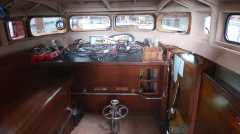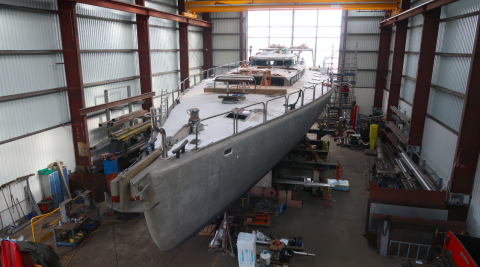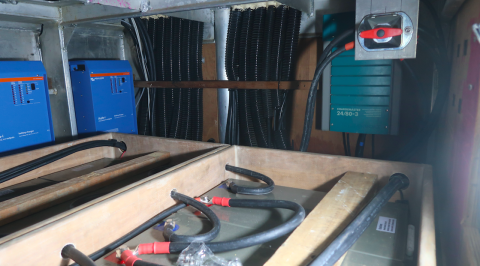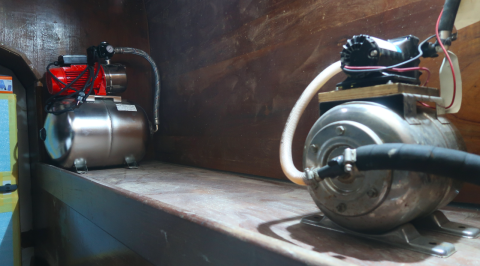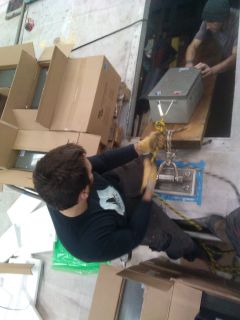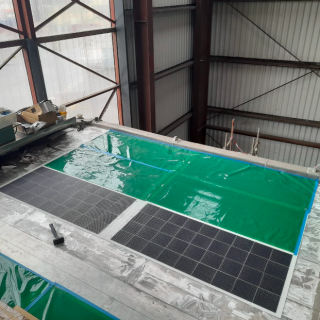Except for the demand for diesel for engines and gas for cooking, the main energy demand is electrical. This energy demand is important for the needs of certain research programmes.
At the start of the shipyard, an electrical balance was drawn up by adding up all the energy requirements in different scenarios of use: with or without the use of scientific instruments, day or night, at dock, at anchor, under sail, and so on.
In total, a maximum requirement of 15 kWh has been estimated by adding together the needs specific to the boat and its navigation, those linked to the life of the men and women on board and those linked to the use of scientific instruments. Some scientific instruments consume a lot of energy.

Legend: Modification of electrical distribution
To meet these different needs, the team has installed a range of equipment to produce and store energy. Here's a quick look at these new installations:
- On board FOREL, two 27 kW generators have been installed. Their functioning depends on the activities carried out on board: the use of the three laboratories, the winch, the watermaker, daily activities, or to recharge the batteries. The GEs installed on FOREL are brand new. Their technology is more efficient than that of the old ones, reducing carbon emissions and diesel consumption.
- The electricity produced is not necessarily consumed directly. It is important to store the surplus electricity produced. This is made possible by an impressive battery bank. This week, the team successfully installed the battery bank under the saloon (living area): a total of 28 265 A/h batteries, i.e. 14 24V batteries connected in series, to ensure the boat's autonomy in all regions of the world. Thanks to this impressive battery bank, FOREL can operate under sail (without engine or generator) for 10 to 12 hours (electricity on board, navigation lights, navigation instruments, etc.).
- 12 x 180-watt solar panels (@SOLBIAN) have also been installed on the aft gantry. These solar panels are particularly resistant. You can even walk on them. Their production can cover part of FOREL's electricity needs during the summer, depending on the amount of sunlight. This renewable energy reduces the need for fossil fuels. During the greenlandic summer, the crew will live under the midnight sun, which is ideal for optimising the use of the solar panels.

